Business
Why Amazon HQ2 Should Choose Austin
Published
8 years agoon
By
Ginny Nguyen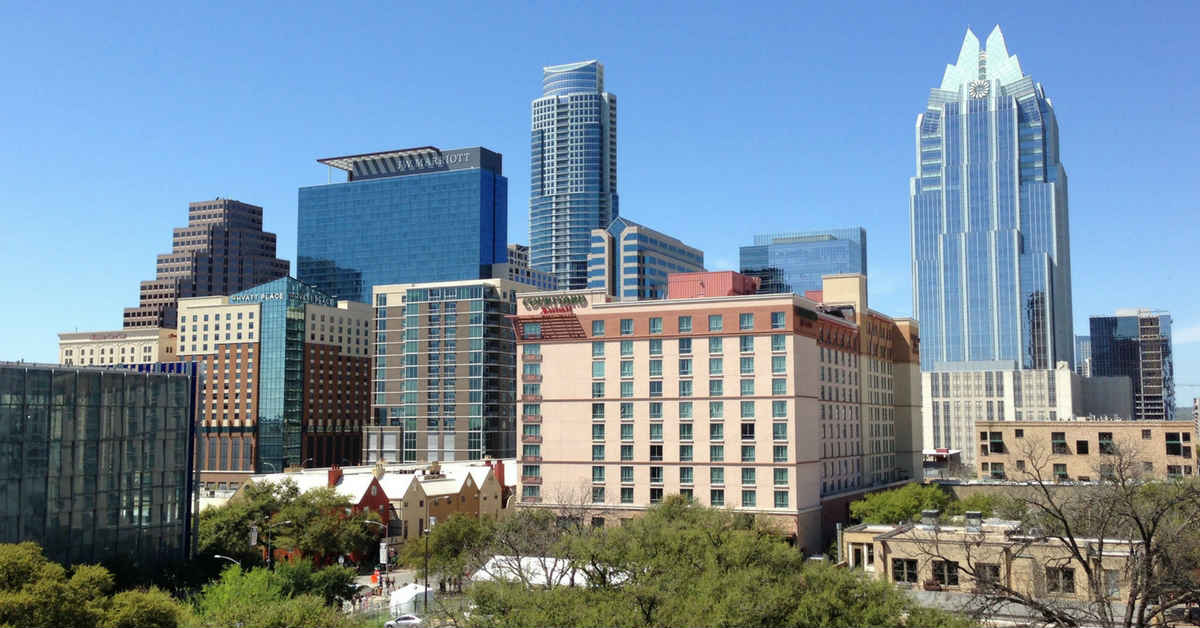
Amazon had made October a busy month for city officials. The bid for Amazon HQ2 had a deadline of Oct. 19, 2017. The city to make the top 20 list featured Austin, Texas. The Greater Austin Chamber of Commerce had presented the city’s proposal for Amazon’s HQ2 on Wednesday, a day ahead of the deadline. Austin officials confirmed that there were no local financial incentives included in the proposal for Amazon HQ2. Despite the bid, this does not eliminate Austin from the competition. Instead, this forces companies to focus on the great surroundings of Austin and of what the community has to offer.
The city of Austin is the fastest growing city in the United States with an economic growth rate of 6.1% from 2011-2016. This is due to their status of being the next Silicon Valley. Austin is gradually morphing their city into a tech hub. This version of Silicon Valley offers high affordability to Austin investors, which is unlike the original hub. The community preserves a young, educated population and is surrounded by Venture Capitals. The living factors include a thriving restaurant and music culture. The city of Austin is an attraction to young techies and entrepreneurs.
“Texas is a hotbed for the tech industry, and both Austin and Dallas have proven themselves to be among the most sought after locations for companies looking to grow and thrive,” Governor Abbott said. “… I am confident that the economic advantages of an Amazon expansion in Texas speak for themselves, and make either Austin or Dallas an ideal fit for Amazon’s HQ2.”

Image From iStock
The job growth for Austin predicted a production of 9,000 new tech jobs in 2017. Professional engineers, researchers, and etc were already flooding the city. When Amazon decides to pick Austin as their new home for HQ2, it won’t be difficult to search for employment. Perhaps Amazon will relocate to the next Silicon Valley.
“Austin, for several years, has been getting global recognition as a great place to work with. When you look at South by Southwest (festival) … the (Formula) 1 race, (Austin City Limits) festival … that certainly puts Austin on the map for not only Amazon, but other companies that may decide this is the right place for them.” told Mike Berman of the Greater Austin Chamber of Commerce.
The tech company will announce the winning city later in 2018. Meanwhile, small businesses and agencies within Austin are able share their professional insight to Amazon also. This is why Amazon HQ2 Should Choose Austin:
How will Amazon HQ2 affect the economy of the city?
‘With Amazon HQ2 in Austin, we will see the opening of 50,000 new direct and indirect jobs, most of which will north of six figures, not at all surprising given the nature of the business and the high demand for tech professionals in the area’. Told Ricardo Casas of Fahrenheit.io.
‘It will obviously have a big boost, especially if it landed in one of our suburban communities. When you talk about each job equaling more than one person entering the community, and all the rest of the jobs created in the community because of it, it becomes a tremendous addition’. Redroc Austin spoke from Redroc Advertising.
“The impact on Amazon HQ2 to the Austin Metropolitan area would be significant. As a city Austin has a thriving tech and startup scene, one of the best in the country; but when you look at the list of publicly traded companies with headquarters in Austin it is extremely minimal compared to other cities of our size. Amazon building their new HQ2 in Austin would impact infrastructure, urban growth, tech talent pool and countless other aspects similar to what has happened in Seattle”. -Darryl Stevens of DIGITECH Web Design.
“With intentions to invest $5 billion into new construction and create 50,000 new jobs, the Amazon HQ2 will undoubtedly boost the local economy through the tax roll alone. The ripple effects of the HQ2 will also give the economy an added boost. More companies will follow suit and set up their headquarters in the same city, more jobs will be created, trade activity will increase, then the population and house prices will rise…. all of which will keep generating more and more tax revenue”. -James Trumbly of HMG Creative.

Image From Austin Economic Development
Amazon is searching for talent in software development and related fields. What is your city’s tech scene like?
‘Austin has one of the most vibrant tech communities in the country boasting of a strong higher education system and a strong pull from other tech hubs, offering relatively affordable housing, high culture, and growth potential to newcomers’ – Ricardo Casas of Fahrenheit.io.
‘The Austin area is about as good as you can get for tech. Lots of universities. A great environment for you people. SXSW. The list goes on and on’, Redroc Austin spoke from Redroc Advertising.
“Austin has one of the best tech scenes in the country outside of Silicon Valley according to most major editorial reports and industry research, what we are missing is a stable presence of large publicly traded companies”. -Darryl Stevens of DIGITECH Web Design.
“The tech scene in the capital of Texas is thriving. Tech giants such as IBM and Dell have their headquarters in Austin. Facebook, Amazon, and Apple also have offices here. This is just to name a few. SXSW alone attracts thousands of influential people in tech every year”. -James Trumbly of HMG Creative.

Image From AmericanInno
How will the community welcome Amazon HQ2?
‘Austin will benefit tremendously from this new investment. Our roads and developments, however, will suffer with the inflow of new workers. Higher real estate prices and more congested roads will be the most obvious immediate changes’, told Ricardo Casas of Fahrenheit.io.
‘It would be mixed. Everyone knows the boost it could bring, but one of our biggest issues in this town is transportation. No one can fathom how rough this could be on our already saturated freeways. We also don’t seem to have a local government that interested on making transportation better as it is, much less with the addition of Amazon. The HQ2 would certainly need to be on the fringes of town where there would be more room for development’, Redroc Austin spoke from Redroc Advertising.
“Austin is known as a forward thinking city that thinks outside the box, but we are still in the south. We will welcome Amazon with open arms and roll out the red carpet to make HQ2 a success”. -Darryl Stevens of DIGITECH Web Design.
“I think there will be a mixed reaction. I think some members of the community will be excited about the employment opportunities and the value of their property increasing, whereas others will be angry about the growing population. Many feel that Austin is already too overcrowded and traffic is definitely a problem here”. -James Trumbly of HMG Creative.

Image From Lennar Homes
Do you support the major’s proposal? Why, or why not?
‘As a tech professional myself, I do support the proposal and hope we follow this major investment with substantial investment in infrastructure and high density urban living…and please…lots of parking!’ told Ricardo Casas of Fahrenheit.io.
“We support the major’s proposal because we feel that it will be a benefit to the economy and culture of the city as a whole”. -Darryl Stevens of DIGITECH Web Design.
“I support the proposal because of the tremendous amount of capital this will bring to the city. It will help develop the infrastructure, provide employment opportunities for local talent (at all skill levels) and it will ultimately catapult the growth of the city. I think it will be a big win, not just for Austin, but for all of Texas”. -James Trumbly of HMG Creative.

Image From Patch
Besides financial incentives, what does your city offer?
‘Austin offers a vibrant culture, young demographics, buzzing music scene and great night life. It also offers relatively inexpensive housing and a growing pool of qualified workers’, told Ricardo Casas of Fahrenheit.io.
“Austin. Everyone wants to be here these days to be a part of the city and the energy. People want to move here. That makes it so much easier to hire and bring people in’, Redroc Austin spoke from Redroc Advertising.
“While not all details have been disclosed, our cities offers one of the largest university campuses in the nation; The University of Texas. This would provide a constant stream of new talent for the brand including other major institutions in the area such as St. Edwards University, Texas State University and Texas A&M”. -Darryl Stevens of DIGITECH Web Design.
“A business-friendly environment, an exciting networking scene, a well-educated recruitment base, an international airport, plenty of culture and great weather. Amazon wouldn’t have to worry about regular snowstorms disrupting business”. -James Trumbly of HMG Creative.

Image From Austin.com
What is in your city that isn’t found anywhere else?
‘Austin has a very unique vibe and a culture that is only found in much larger centers. It is fun, it’s smart, it’s fit and healthy, it’s outdoors and it’s inclusive’. – Ricardo Casas of Fahrenheit.io.
‘SXSW. ACL Fest. “Live Music Capital of the World” Texas state capitol. Willie Nelson’, Redroc Austin spoke from Redroc Advertising.
“We offer a similar culture to San Diego and San Francisco in which the cost of living is still actually affordable. This is truly the only place in the country that can still be found”. -Darryl Stevens of DIGITECH Web Design.
“A unique kind of weirdness that everybody loves”. -James Trumbly of HMG Creative.
There are other agencies however who actually believe, ‘I’m not sure I do think Austin’s the best place for an Amazon headquarters. We’re already bursting at the seams with so many people and don’t have the infrastructure for the population we have’, told Kristen Hicks of Austin Copywriter. While the opportunity is at large, many other agencies do not see fit in this business deal.

Image From Austin Music Source
If you are an agency from Austin, and wish to contribute, please fill out this form here: https://ownersmag.com/need-talk-marketing-pr-agencies-amazon/
*Sponsored by Penji*
You may like
What’s the Best Graphic Design Service for Beauty & Wellness Brands
10 Best AI Tools for Entrepreneurs
Our Top 10 Video Editing Tools for Smarter Content Production
What’s the Best Graphic Design Service for Education & eLearning?
What are the Best Graphic Design Services for Fashion Brands?
How TikTok and Instagram Track You Using In-App Browsers

AI tools have evolved fast, and entrepreneurs now rely on them not just to automate tasks but to scale entire workflows. That said, it’s not surprising that many business owners are leveraging the power of cutting-edge technology. And this is where AI tools for entrepreneurs come in. Let’s look at what they are and a few examples you can check out.
1. Aomni Agent
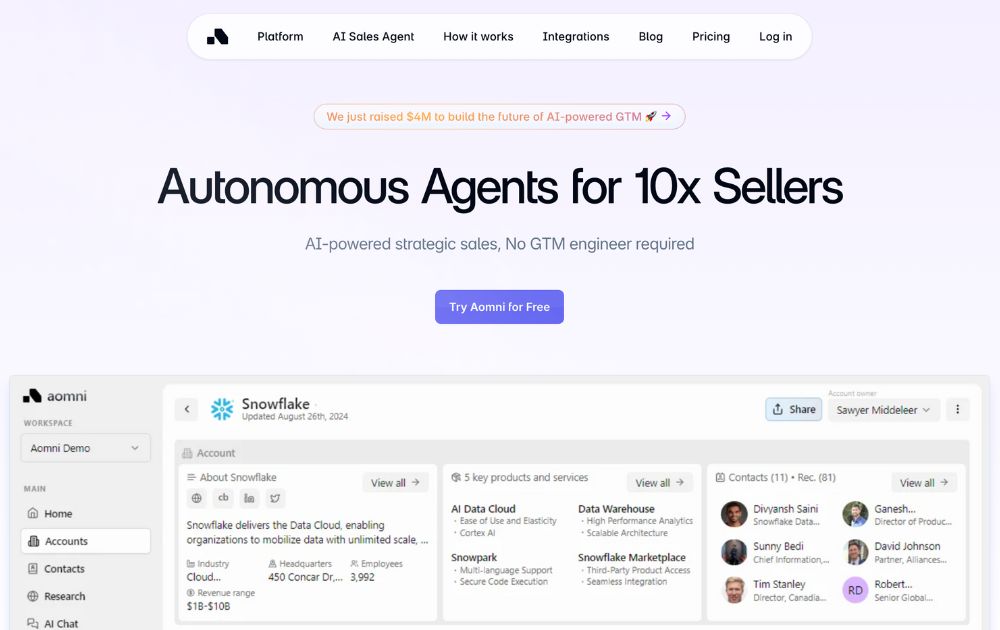
Packed with powerful AI-driven features, Aomni Agent is a tool that can help you grow your company’s outbound pipeline by conducting research to give you new Ideal Customer Profiles (ICPs). With it, you no longer have to create account plans for each of your prospects, as the AI tool will do it for you.
Aomni Agent engages with your customers, provides support, automates routine tasks, and gives you real-time insights and analytics, among many other features. To know its pricing and additional information, you need to contact them directly through their website.
2. Pictory
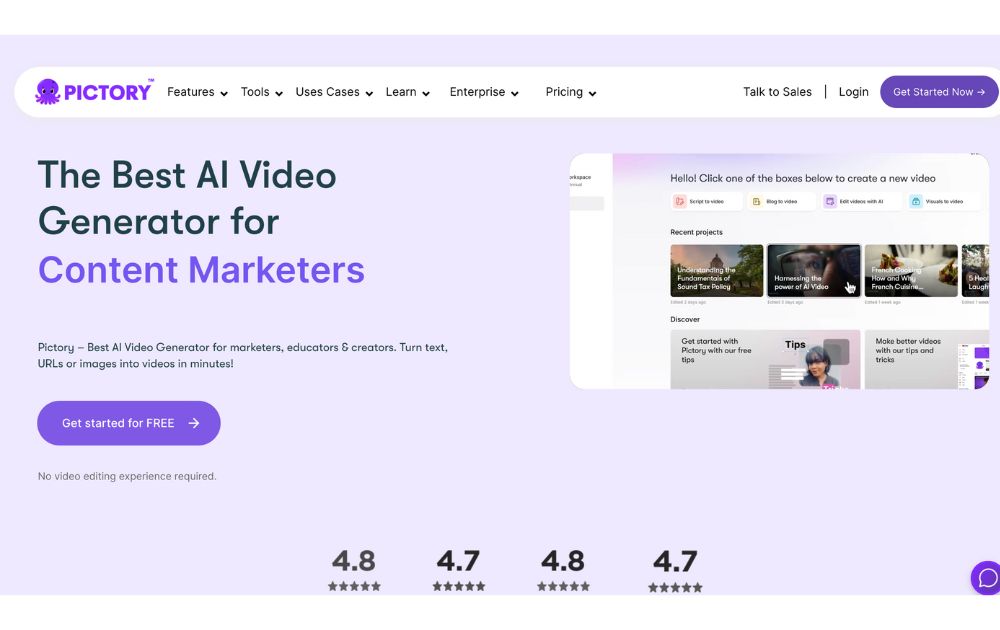
A video creation tool, Pictory, can help you create engaging and professional videos in minutes. It uses AI that automatically generates videos from your text, images, and audio. This means you get excellent results even without any video editing skills.
You can use Pictory to generate videos from your blog posts, articles, and other text. It can also edit existing videos and add images, music, or text. It offers a free trial and three plans with subscription fees that range from $23 to $119 per month.
3. Zeda.io
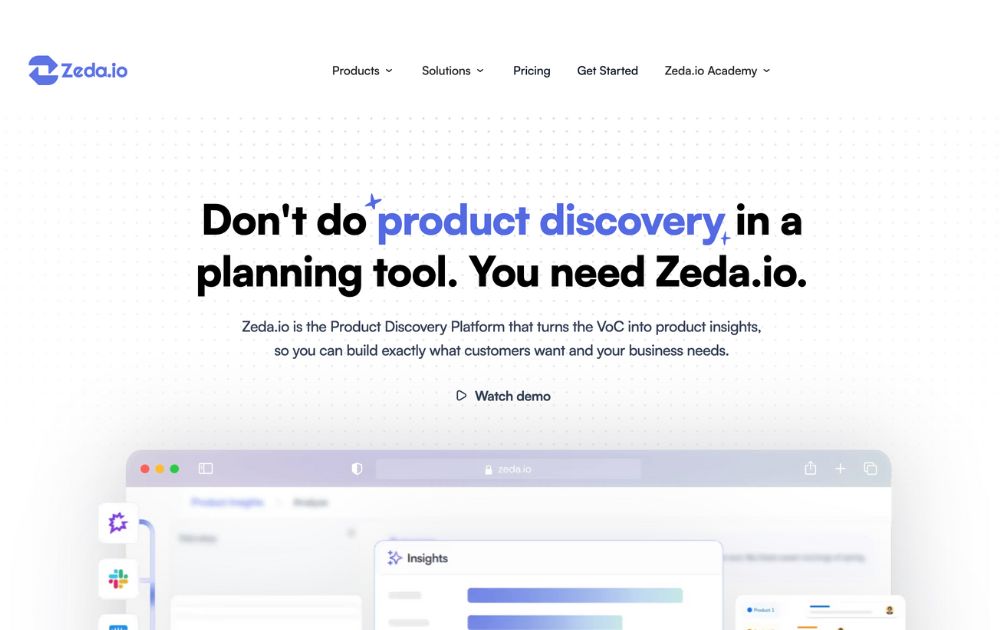
Zeda.io has grown into a powerful AI-powered product operating system. With its 2.0 update, the platform now connects customer feedback, product strategy, roadmapping, and internal documentation into a single intelligent workspace.
Its AI engine analyzes thousands of customer inputs, from surveys to reviews to support tickets, to identify patterns, prioritize features, and suggest product improvements. What used to take days of manual synthesis now takes minutes. The updated version also includes AI-generated product briefs, automated roadmap updates, and integrations with popular tools like Slack, Notion, and HubSpot.
4. Slite Ask
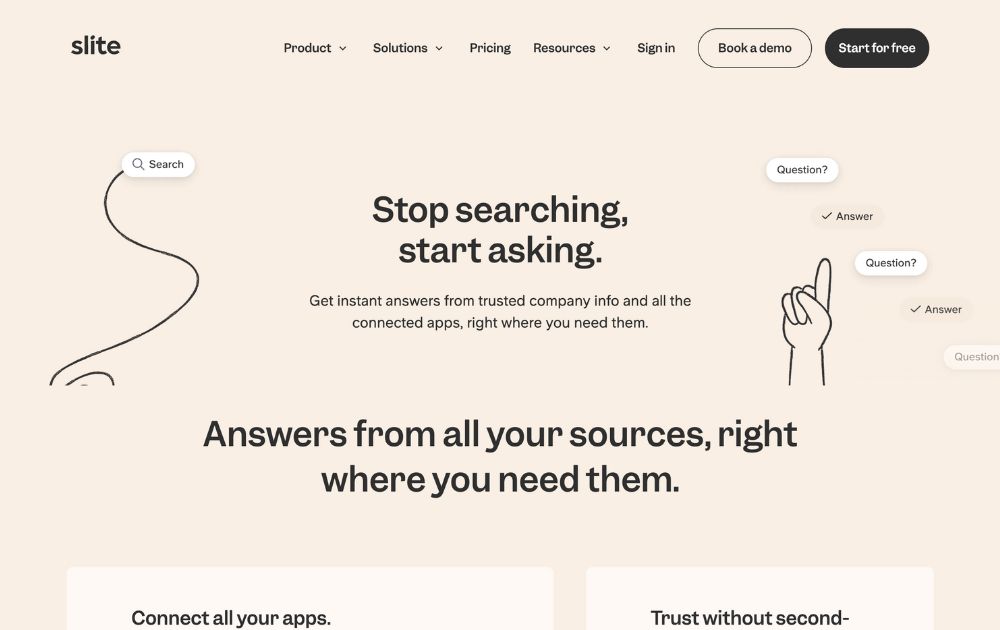
Slite Ask is one of the most reliable AI knowledge-base assistants for teams. Instead of manually searching docs or old messages, entrepreneurs can simply “ask” a question and get an instant answer based on their workspace knowledge.
The AI scans company documents, policies, SOPs, and internal notes to deliver accurate responses without hallucinations. This makes onboarding smoother and speeds up decision-making, especially for remote or hybrid teams.
5. Credal.ai
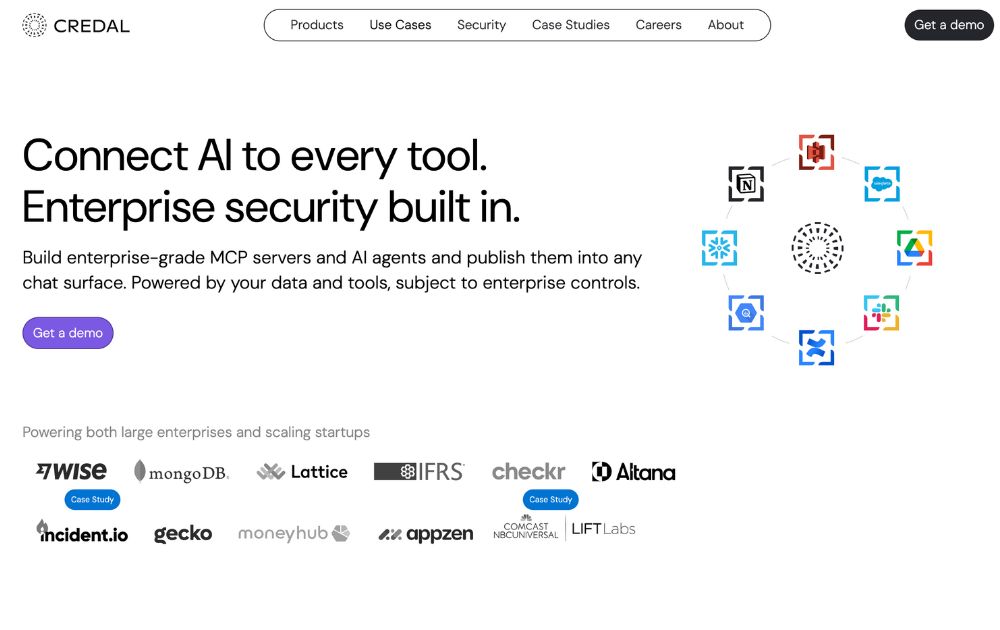
Keep your data safe with an AI tool that’s perfect for entrepreneurs. Credal.ai is a software that provides a secure environment for AI applications to run and monitors them for any potential security threats. This helps you protect your business’s sensitive data from unauthorized users.
Credal.ai protects your data from leaks, malicious codes, and unauthorized access. It has a free plan but with limitations, so to get the most out of this AI tool, a Team or Enterprise plan is recommended. Pricing starts at $500 per month.
6. Webscraping.AI
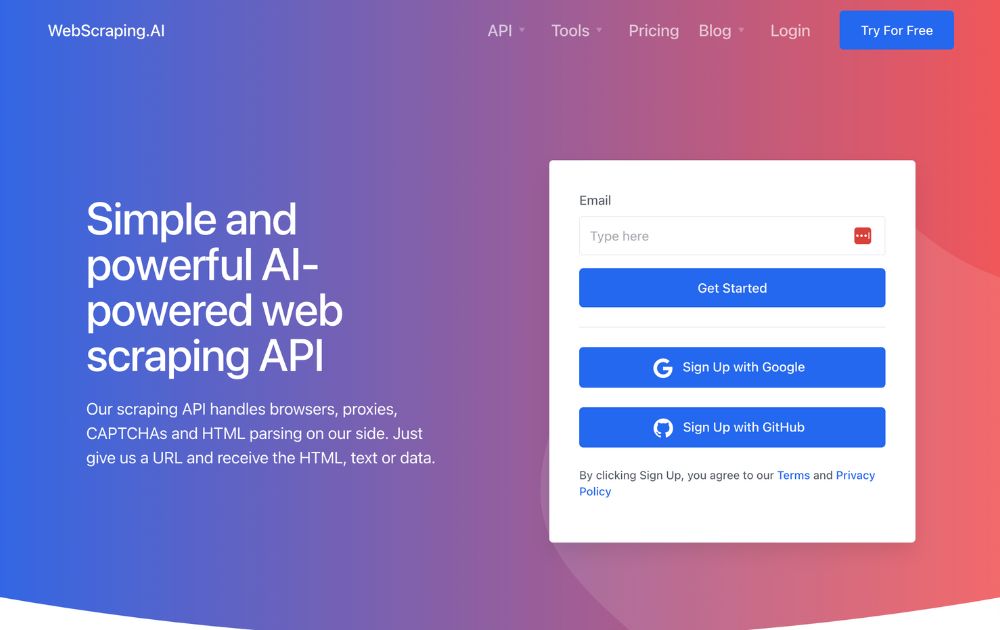
Web scraping is the process of extracting data from a website, such as stock prices, product details, company contacts, and many more. If you want access to this information, you’ll need Webscraping.AI. It is easy to use and won’t require you to have any coding or technical skills. All you need to do is enter the website you want to scrape, and the tool will automatically get the data from the website.
Webscraping.AI can help business owners make better decisions by providing accurate data to identify new opportunities. It can also help them make better decisions for their strategies. Pricing for this AI tool for entrepreneurs ranges from $29 to $249 per month, with no hidden fees.
7. ValueProp.dev

A value proposition is a statement that tells your customers what your product or service is all about. This can be tricky, but worry no more, as ValueProp.dev is an AI tool for entrepreneurs created explicitly for this. It uses machine learning to analyze your customer data to generate unique value propositions for you.
ValueProp.dev can help you improve your business by generating value propositions that significantly increase customer acquisition, retention, and sales. It is free for up to three value propositions, but they also have premium plans for more options and features. Pricing starts at $29 per month.
8. Lovo.ai
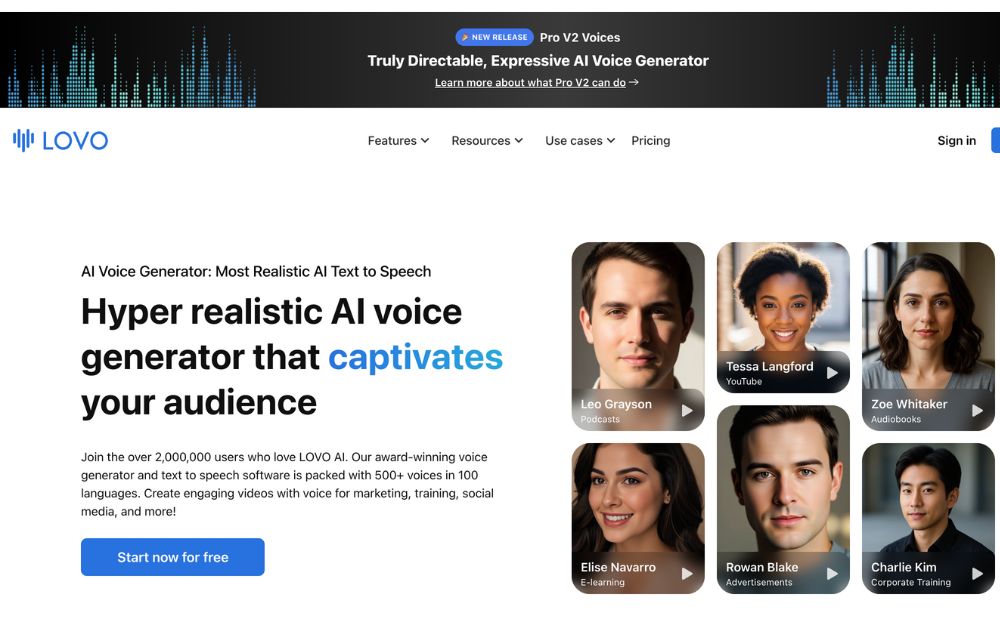
A text-to-speech and text-to-video platform, Lovo.ai can help you create engaging and informative content for your content marketing strategies. It uses AI to generate realistic and human-loke voiceovers, videos, avatars, and others. You can extend your reach globally as this tool can do voiceovers and videos in more than 140 languages.
Lovo.ai can help you increase your engagement, improve your SEO rankings, and boost conversions. You can try their free plan to give you an idea of what the tool can do for you. But for more features, a paid plan that starts at $19 per month can provide more value.
9. Zigpoll
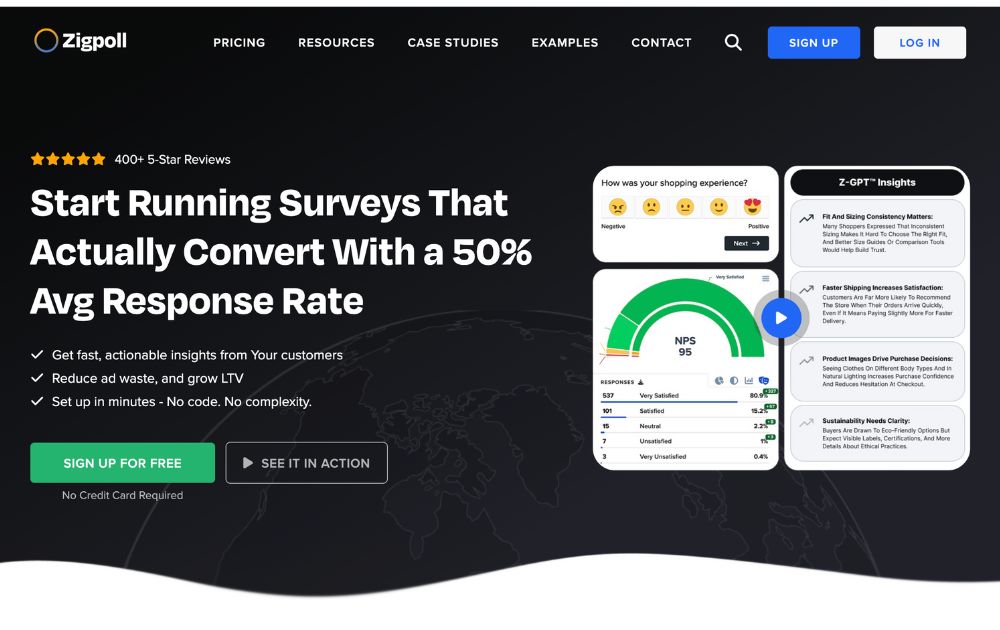
Zigpoll remains a solid choice for collecting customer insights, but its capabilities have expanded over the past two years. Today, Zigpoll uses AI to generate survey questions, summarize responses, detect sentiment, and even segment customers automatically.
Entrepreneurs can embed polls on websites, email campaigns, or post-purchase pages, then let Zigpoll’s AI categorize feedback into actionable insights. This helps brands quickly spot trends, product issues, or opportunities for upselling.
10. Pitches.ai

Are you looking to increase your business funding? Then creating the perfect pitch deck should be your priority. You can easily and quickly do this with Pitches.ai. It is an AI-powered tool for entrepreneurs to develop and refine pitch decks.
Pitches.ai analyzes pitch decks and gives you feedback on their structure, persuasiveness, and clarity. This gives you a higher probability of success. It offers four premium plans with prices ranging between $95 to $1,195.
Conclusion
Artificial intelligence is slowly becoming popular among business owners. Thanks to their many advantages, it’s no surprise that many will be using the technology from now on. These AI tools for entrepreneurs are a great example, and you should check them out today.
Featured Image Credit: Photo by Anna Shvets from Pexels
Business
What’s the Best Graphic Design Service for Education & eLearning?
Published
5 days agoon
November 13, 2025
TLDR: Best unlimited graphic design services for education and eLearning: ideal for quick turnaround, high-quality designs, and affordable pricing.
84% of communication is visual. Thus, for a world of education and eLearning, graphic design is imperative in the creation of projects for students and complex concepts. From interactive course materials to compelling marketing, strong visuals drive success. But finding a reliable, affordable design partner is tough.
Thus, it’s hard to come by a reputable service that can provide all your needs at a reasonable cost when it comes to project designs, turnaround expectations, anticipated quality and budgetary allowances.
But never fear! We’ve vetted what’s best for you!
1. Penji
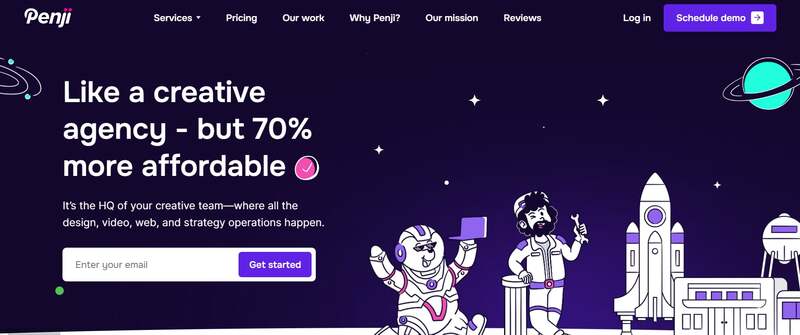
If you’re looking for the best for education and eLearning purposes, Penji has the best overall value as quality, turnaround time and offers have placed it at a reasonable flat fee monthly.
Penji is an unlimited graphic design service that works as you would expect – unlimited – which means that for a flat fee monthly, you’ll have access to your very own team of designers.
Features:
- A Well-Qualified Team of Designers: Whether you need e-learning interactive designs to course visuals (infographics, presentations) Penji’s graphic designers make everything visually appealing to an academic audience.
- Turnaround: Average turnaround is about 24-48 hours so you can keep churning out material for course creation or marketing.
- Unlimited Revisions: As many times as needed to get your requested project right.
- Accessibility and Submission Portal: Penji comes with a site that’s fairly user-friendly for ease of access in submissions, critiques and conversations.
2. Kimp
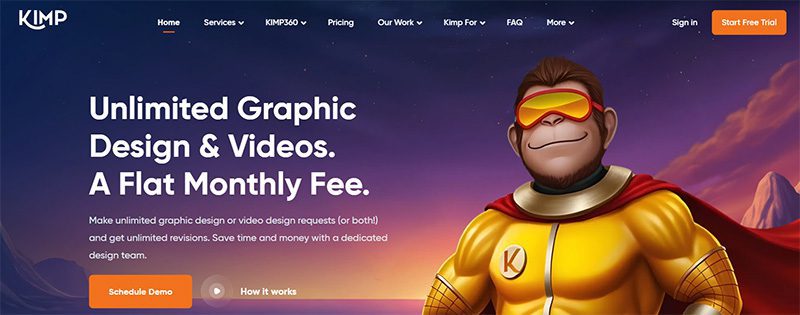
If you need an unlimited source and don’t mind one that’s second best, Kimp boasts graphics and even video. Consider this option with caution – some reviews do mention turnover can vary and this wouldn’t be the best reliable option if you’re on a time crunch for every project.
Features:
- Wide Range of Services: Kimp provides both graphic design and video services, offering a versatile creative solution.
- Dedicated Designers: You’ll work with a group as your designated team so you get to know your specific creators.
- Easier Feedback Opportunities: Feedback can be given on the Kimp site for creations with visual access as to what you want changed.
3. Design Pickle
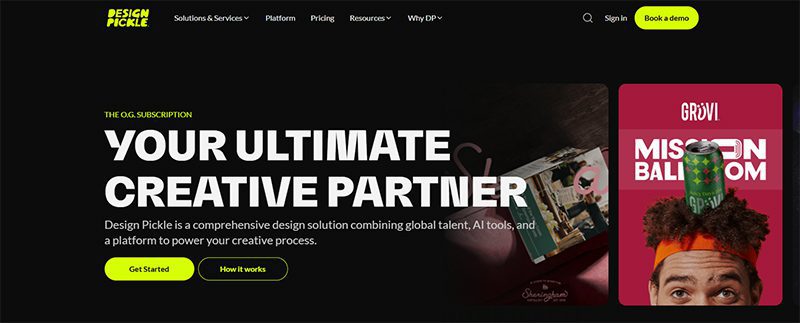
Design Pickle was one of the first unlimited graphic design services to go for an unlimited design game. This is helpful if you need custom illustrations or a presentation created for a polished look in any educated (or business) endeavor – higher tier subscriptions go with probability – but in all other worlds, it has more value than other sites when stacked against one another.
- Unlimited revisions to get the exact illustrations or graphics needed for presentations or other projects.
- Quick turnaround times to keep on schedule with 48 hour returns.
- Global Design Team: Boasts a diverse team of professional designers, offering expertise across multiple industries to match various client needs.
4. ManyPixels
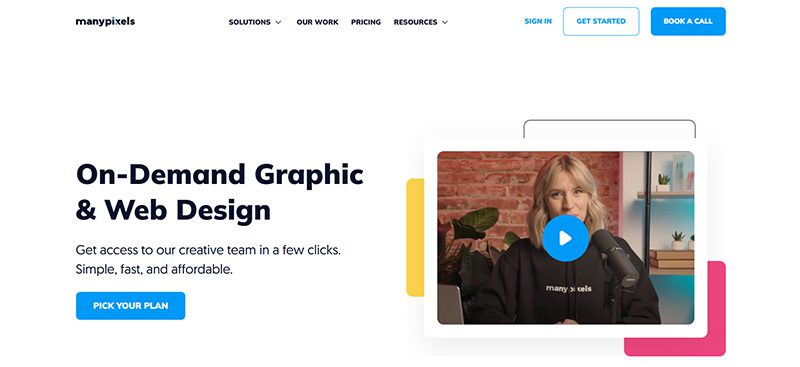
ManyPixels is another reputable source that has unlimited graphic designs services but assignment transparency which means you’ll have one assigned designer to you, but they’re a bit more transparent with regards to who may (or not) be able to help you but will get back to you with good timing.
- One Dedicated Designer: ManyPixels is a company that does not have unlimited designs, however you’ll have one assigned who will know your needs better than most.
- Good Turnaround Time: Generally they’ll turn around assignments within 1-2 days after submission regardless of simplicity/complexity.
- Reliable Designs: Good for marketing or simple visuals/templates you’d want to use for educational continuity but they may not give as specialized feedback as you’d think.
Cover Image Credit: Photo by Fox on Pexels
Business
What are the Best Graphic Design Services for Fashion Brands?
Published
6 days agoon
November 11, 2025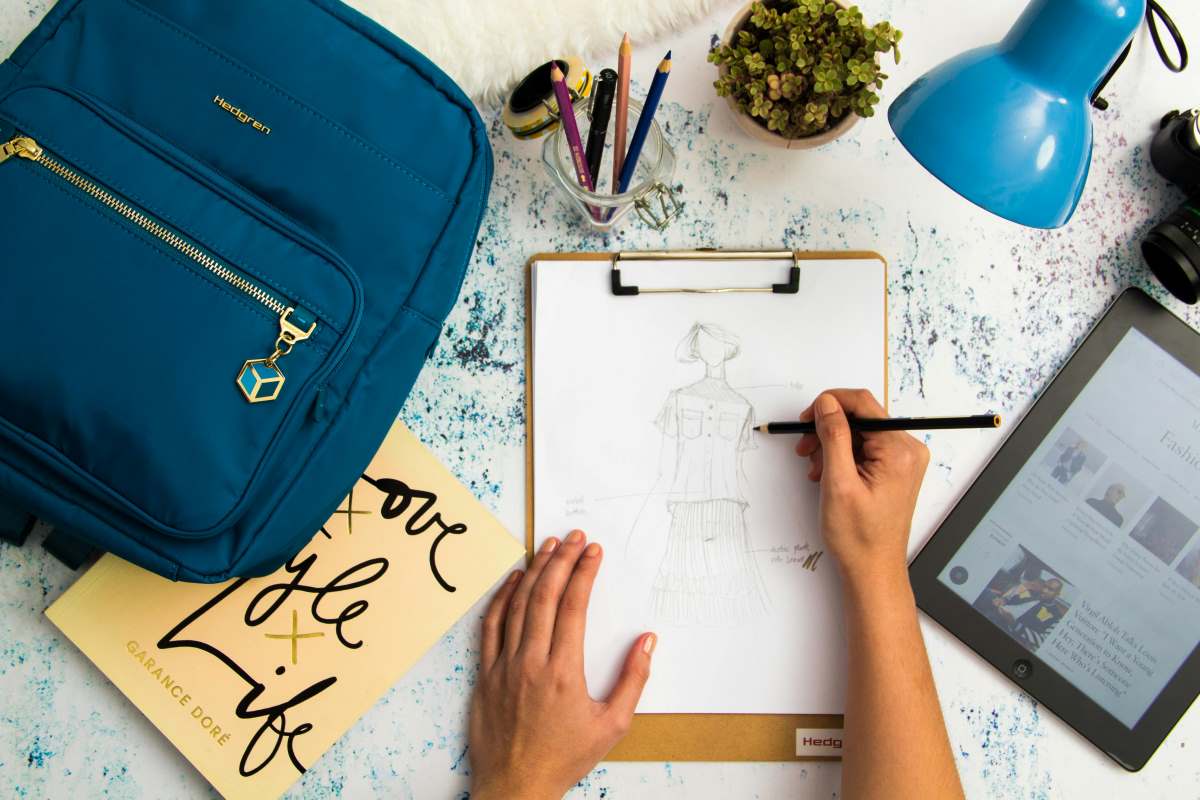
For many businesses, graphic design means conversions, credibility, and brand recall. So, if you’re in the fashion industry, you also need to have significant visual assets if growth is your priority. If you need help finding the best graphic design service for your fashion brand, we made a list of the top five:
Penji

An on-demand graphic design platform, Penji offers unlimited graphic design services for fixed monthly fees. This allows you to send as many requests for lookbooks, catalogs, packaging designs, and many other marketing materials for less. Its team of top-notch designers assures you of consistent and high-quality work worthy of your fashion business.
Kimp

Built to support the creative needs of many businesses, including fashion, Kimp is another platform that offers unlimited design requests. It can craft product mockups, campaign visuals, packaging designs, and social media graphics, among others. It also provides video editing services, making it ideal for fashion companies that run reels, seasonal promos, or behind-the-scenes edits.
Designity

Combining agency-level creative direction with flexible access to US designers, Designity suits fashion brands that need polish, strategy, and scalability. They can provide you with social media graphics, online ads, label designs, logo and branding, and magazine layouts, among other key services.
Flocksy

If your business needs video editing, copywriting, and voice-over services, then Flocksy is the best graphic design service for your fashion brand. In addition, it also offers custom illustrations, packaging design, infographics, and many other design services. It operates on a flat-rate pricing model, making it a more cost-effective option than hiring freelancers or working with expensive agencies.
Reel Unlimited

With its predictable pricing and wide array of graphic design services, Reel Unlimited is an excellent design solution for fashion brands. Like many on this list, it offers unlimited design requests and fast turnaround times, making it the ideal option for those with tight schedules and limited budgets.

What’s the Best Graphic Design Service for Beauty & Wellness Brands

10 Best AI Tools for Entrepreneurs

Our Top 10 Video Editing Tools for Smarter Content Production

What’s the Best Graphic Design Service for Education & eLearning?

What are the Best Graphic Design Services for Fashion Brands?

How TikTok and Instagram Track You Using In-App Browsers

What’s the Best Graphic Design Service for Marketing Agencies?

Our Top 10 Video Editing Tools for Smarter Content Production

How TikTok and Instagram Track You Using In-App Browsers

Top 10 Free and Paid Employee Communication Tools

10 Best AI Tools for Entrepreneurs

10 Best Photo Editing Apps for Personal and Business Use in 2026

What’s the Best Graphic Design Service for Healthcare Brands?

What’s the Best Merchandise Design Company?
Trending
- Technology4 days ago
Our Top 10 Video Editing Tools for Smarter Content Production
- Business4 days ago
10 Best AI Tools for Entrepreneurs
- Business5 days ago
What’s the Best Graphic Design Service for Education & eLearning?
- Uncategorized4 days ago
What’s the Best Graphic Design Service for Beauty & Wellness Brands






